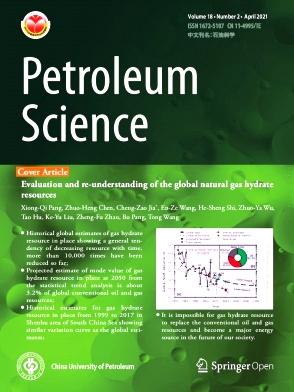Impacts of microbial interactions on underground hydrogen storage in porous media: A comprehensive review of experimental, numerical, and field studies
IF 6
1区 工程技术
Q2 ENERGY & FUELS
引用次数: 0
Abstract
Amidst the rapid development of renewable energy, the intermittency and instability of energy supply pose severe challenges and impose higher requirements on energy storage systems. Among the various energy storage technologies, the coupled approach of power-to-hydrogen (H2) and underground H2 storage (UHS) offers advantages such as extended storage duration and large-scale capacity, making it highly promising for future development. However, during UHS, particularly in porous media, microbial metabolic processes such as methanogenesis, acetogenesis, and sulfate reduction may lead to H2 consumption and the production of byproducts. These microbial activities can impact the efficiency and safety of UHS both positively and negatively. Therefore, this paper provides a comprehensive review of experimental, numerical, and field studies on microbial interactions in UHS within porous media, aiming to capture research progress and elucidate microbial effects. It begins by outlining the primary types of UHS and the key microbial metabolic processes involved. Subsequently, the paper introduces the experimental approaches for investigating gas–water–rock–microbe interactions and interfacial properties, the models and simulators used in numerical studies, and the procedures implemented in field trials. Furthermore, it analyzes and discusses microbial interactions and their positive and negative impacts on UHS in porous media, focusing on aspects such as H2 consumption, H2 flow, and storage safety. Based on these insights, recommendations for site selection, engineering operations, and on-site monitoring of UHS, as well as potential future research directions, are provided.
求助全文
约1分钟内获得全文
求助全文
来源期刊

Petroleum Science
地学-地球化学与地球物理
CiteScore
7.70
自引率
16.10%
发文量
311
审稿时长
63 days
期刊介绍:
Petroleum Science is the only English journal in China on petroleum science and technology that is intended for professionals engaged in petroleum science research and technical applications all over the world, as well as the managerial personnel of oil companies. It covers petroleum geology, petroleum geophysics, petroleum engineering, petrochemistry & chemical engineering, petroleum mechanics, and economic management. It aims to introduce the latest results in oil industry research in China, promote cooperation in petroleum science research between China and the rest of the world, and build a bridge for scientific communication between China and the world.
 求助内容:
求助内容: 应助结果提醒方式:
应助结果提醒方式:


